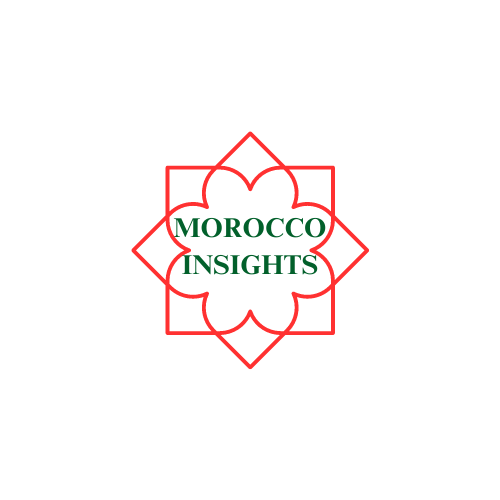In the captivating world of Moroccan fashion, the blending of modern and traditional styles creates a unique and vibrant aesthetic. Moroccan fashion effortlessly combines the ancient traditions of the past with the contemporary influences of the present. From intricately patterned textiles to ornate accessories, the fusion of modern and traditional elements results in a fashion culture that is both timeless and innovative. Join us as we explore the fascinating realm of Moroccan fashion and discover the captivating beauty that emerges from this remarkable fusion.
Traditional Moroccan Fashion
Moroccan fashion is a fascinating blend of modern and traditional styles, with a rich cultural heritage that is beautifully reflected in the clothing and textiles. The vibrant and diverse history of the country has influenced the fashion industry, making Moroccan fashion unique and highly sought after around the world.
Influence of Moroccan Culture on Fashion
Moroccan culture has greatly influenced the fashion world with its rich traditions, vibrant colors, intricate patterns, and diverse clothing styles. The cultural heritage of the country is reflected in the clothing worn by Moroccan people, as well as the techniques used to create these garments.
1. Moroccan Traditional Clothing
Moroccan traditional clothing has a distinct and unique style that reflects the country’s history and cultural influences. Three prominent examples of traditional clothing are the Djellaba, Caftan, and Takchita.
1.1 Djellaba
The Djellaba is a traditional hooded cloak worn by both men and women in Morocco. It is typically made of wool or cotton and is available in various colors and designs. The Djellaba is not only a practical clothing item but also a symbol of Moroccan identity and cultural heritage.
1.2 Caftan
The Caftan is an elegant and luxurious garment worn by Moroccan women for special occasions and celebrations. It is typically made from luxurious fabrics such as silk or satin and is adorned with intricate embroidery and embellishments. The Caftan has gained international recognition and has become popular on runways worldwide.
1.3 Takchita
The Takchita is a two-piece garment consisting of a dress and a matching outer robe. It is often worn during weddings and other festive events. Made from silk or other fine fabrics, the Takchita is known for its exquisite embroidery and beadwork.
2. Major Traditional Textile Techniques
Traditional Moroccan fashion is known for its intricate textile techniques that have been passed down through generations. These techniques contribute to the uniqueness and beauty of Moroccan clothing.
2.1 Embroidery
Embroidery is a significant component of Moroccan traditional clothing. Skilled artisans meticulously stitch intricate patterns onto fabrics, creating a stunning visual effect. Embroidery is often done using brightly colored threads, and the motifs may vary from geometric shapes to floral designs.
2.2 Weaving
Weaving is another major traditional textile technique in Morocco. Craftsmen use special looms to create fabrics with unique patterns and textures. The most famous Moroccan fabric is the “sabra” silk, made from cactus fibers, which is used to create beautiful scarves, blankets, and other textiles.
2.3 Tilework
Morocco is famous for its intricate tilework, known as “zellige.” While not a textile technique per se, tilework heavily influences Moroccan fashion. The geometric patterns and vibrant colors of zellige can be found in the designs of traditional Moroccan garments, giving them a distinct and visually striking appearance.
Modern Moroccan Fashion Trends
Modern Moroccan fashion showcases a seamless fusion of traditional styles with contemporary elements. Designers are reinventing traditional clothing pieces and incorporating them into modern fashion trends, creating a unique and captivating style.
3. Fusion of Modern and Traditional Styles
Moroccan fashion designers are known for their ability to blend modern and traditional styles seamlessly. This fusion can be seen in the use of traditional fabrics, such as silk and embroidered textiles, in modern silhouettes and designs. The resulting garments offer a perfect balance between Moroccan heritage and contemporary fashion.
4. Moroccan-Inspired Runway Collections
Moroccan fashion has made its mark on the international runway scene, with numerous designers drawing inspiration from the country’s rich culture and fashion traditions. Runway collections often feature bold colors, intricate detailing, and luxurious fabrics reminiscent of Moroccan traditional clothing.
5. Influence on Western Fashion
Moroccan fashion has had a significant influence on Western fashion trends, with designers and fashion enthusiasts around the world embracing its unique aesthetic. The use of vibrant colors, intricate patterns, and rich textiles reminiscent of Moroccan traditions can be seen in Western clothing, particularly in bohemian and eclectic styles.
6. Incorporation of Traditional Fabrics and Patterns
Moroccan traditional fabrics and patterns have become increasingly popular in the global fashion industry. Designers are incorporating elements such as silk, embroidery, and tile-inspired patterns into their collections, adding a touch of Moroccan elegance and cultural heritage to contemporary fashion.
Conclusion
Moroccan fashion is a fascinating blend of modern and traditional styles, influenced by the country’s rich cultural heritage. From the traditional clothing pieces like the Djellaba, Caftan, and Takchita to the intricate textile techniques of embroidery, weaving, and tilework, Moroccan fashion offers a unique and captivating aesthetic. The fusion of modern and traditional styles in Moroccan fashion has gained international recognition and has had a significant influence on Western fashion trends. With its vibrant colors, intricate patterns, and luxurious fabrics, Moroccan fashion continues to captivate the world and showcase the beauty of this rich cultural heritage.
